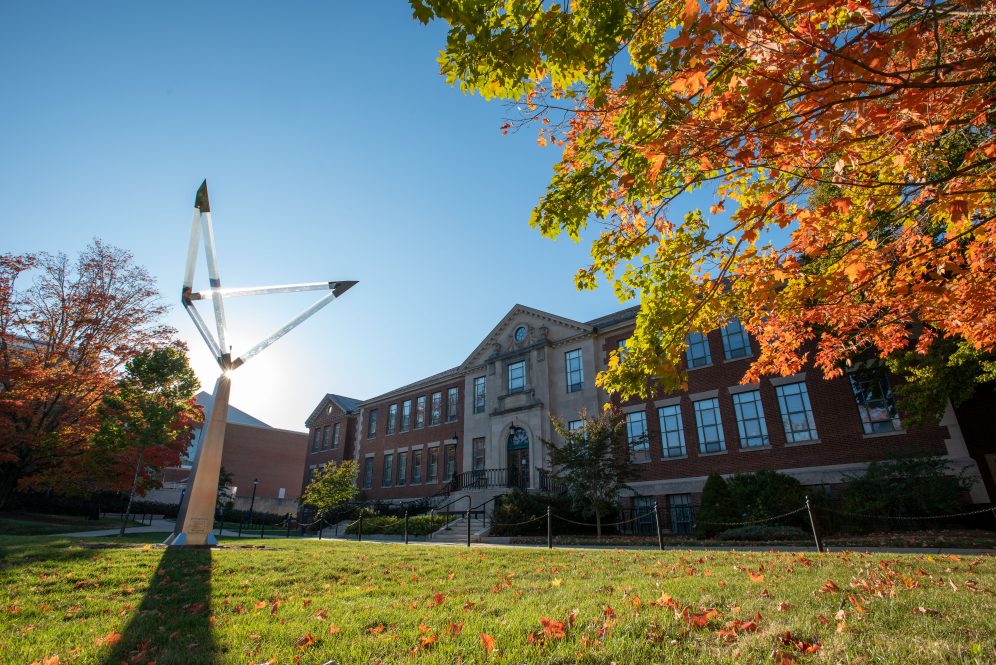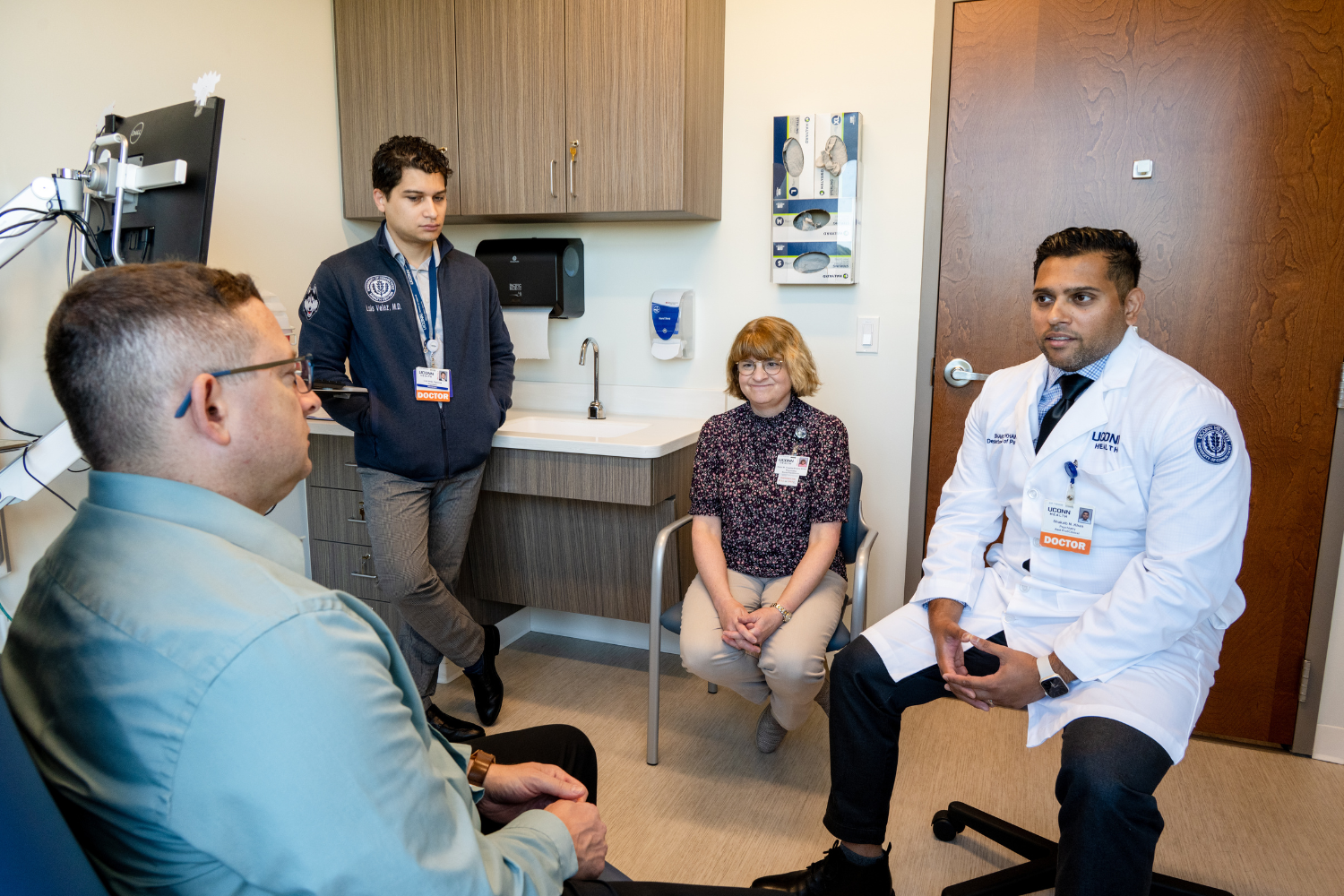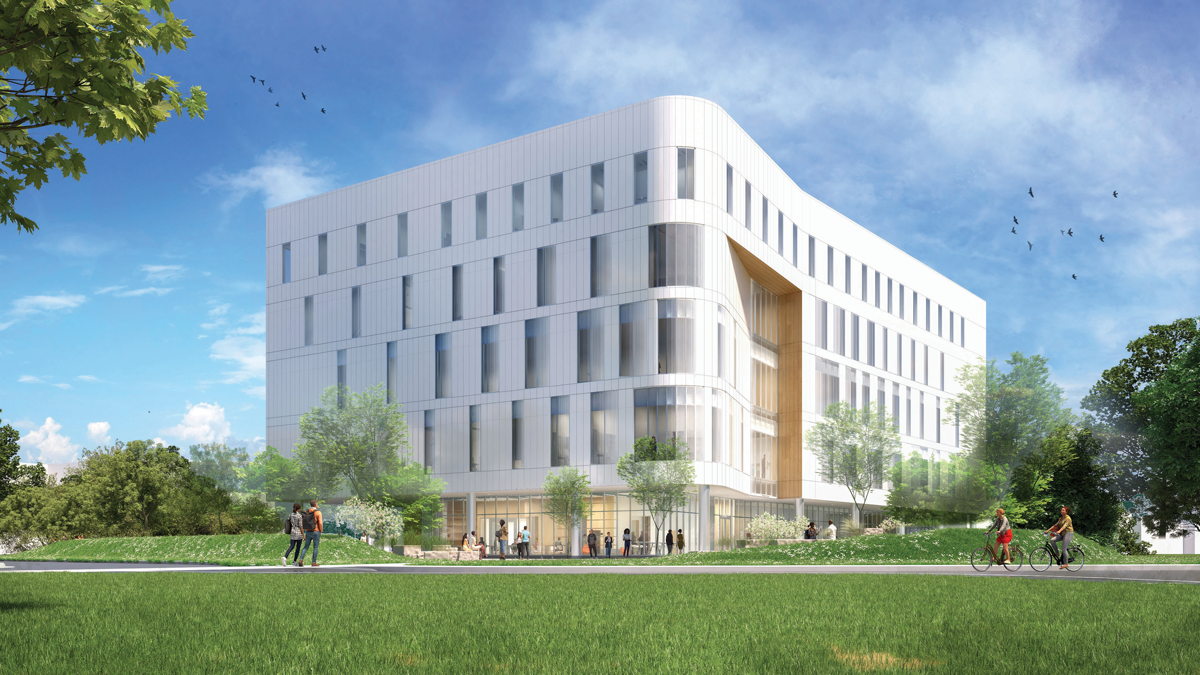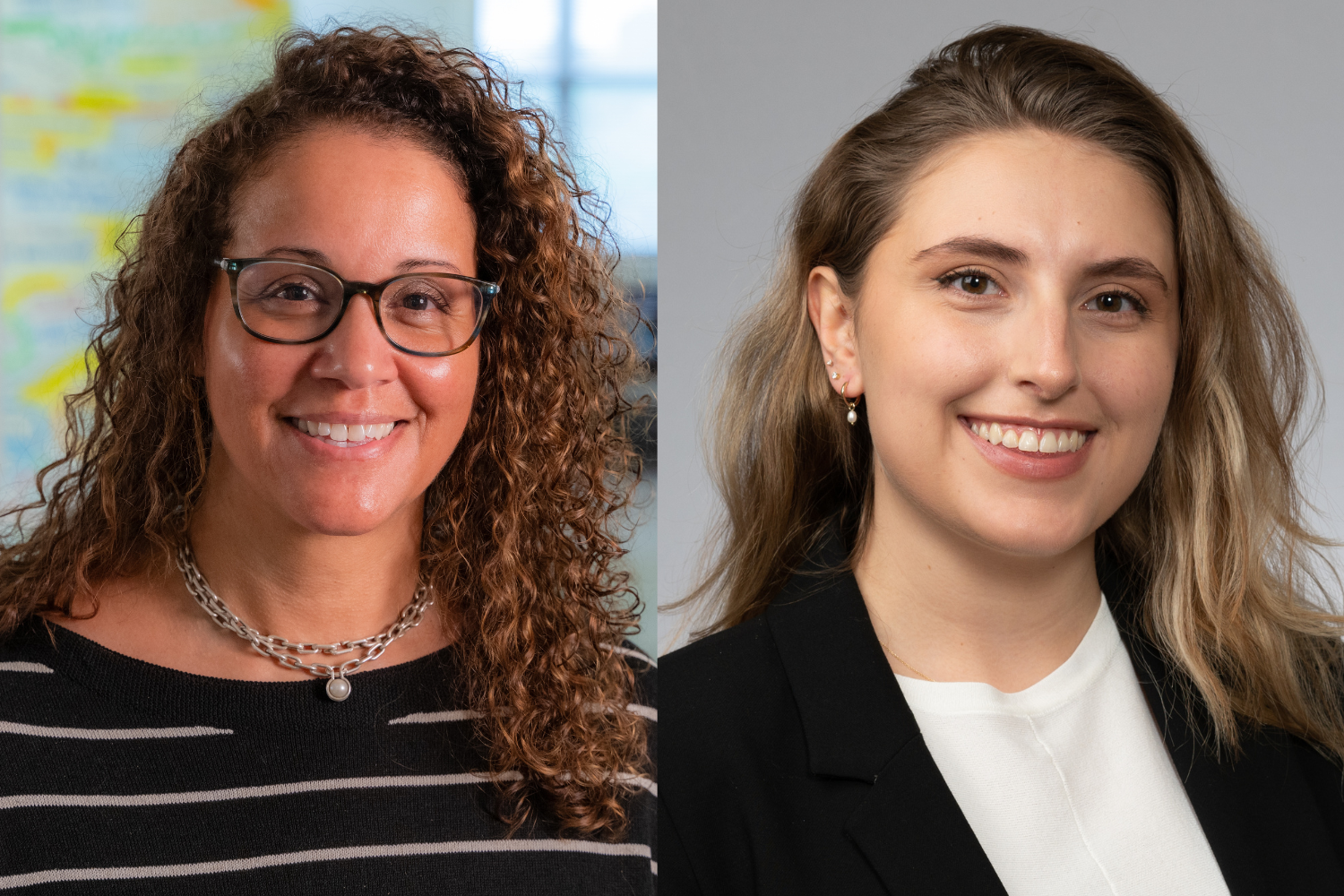This is a sample of the work done in the materials science and engineering department. For more materials science and engineering work, visit their website.
Shock Waves on the Cover of the Journal of Applied Physics
By Amanda Campanaro
Materials science and engineering researchers Avinash Dongare, Assistant Professor, and Ph.D. student Garvit Agarwal’s publication, Shock wave propagation and spall failure in single crystal Mg at atomic scales, was recently featured on the cover of the Journal of Applied Physics.
Their research focuses on developing a fundamental understanding of dynamic failure behavior of lightweight metallic material systems such as Magnesium (Mg) under extreme environments at the atomic scales. To do this, they used a molecular dynamics technique to gain a better understanding of the response of a single Mg crystal to different conditions of impact loading. The shock wave structure, the wave propagation behavior and the failure behavior of Mg is studied at different impact velocities and in two different loading orientations.
“There is a limited understanding of the shock wave structure and the wave propagation behavior of [Hexagonal Close-Packed] material systems due to their complex anisotropic crystal structure,” Garvit said. An anisotropic structure has a different value when measured in different directions, such as wood, which is stronger along the grain than across it. “Thus, the current research is an attempt to improve this understanding and provide novel insights in this direction.”
Garvit and Dongare’s research is a step toward the future of impact-resistant materials. Since Hexagonal Close-Packed metals like Mg and Mg alloys are promising candidates for next generation lightweight armor materials, a fundamental understanding of the failure behavior under shock loading conditions would enable them to design better impact-resistant material.
“The most interesting thing about modeling techniques like MD simulations is that it gives us the capability to design experiments virtually on a computer screen and study the effects of different operating environments on the material system in a systematic way,” Garvit said. It also allows for greater flexibility and the ability to study phenomena at the atomic resolution which are difficult to study using experiments.
While conducting this research, Garvit explored the concept of using modeling techniques to understand and solve material science problems, which helped him develop a unique problem solving perspective.
“There are still a lot of things that I learn each day and I am really grateful to my advisor, Dongare, who had been extremely patient with me and taught me everything from the basics,” he said.
Dongare’s research team has had two Journal of Applied Physics features this year. The prior publication, titled Dislocation evolution and peak spall strengths in single crystal and nanocrystalline Cu, co-authored by Dongare and alum Karoon Mackenchary, was published in the journal earlier this year.
Breakthrough Could Improve Turbine Performance, Reduce Carbon Emissions from Power Plants
Maurice Gell, materials science and engineering professor-in-residence, and Eric Jordan, United Technologies Professor of Advanced Materials Processing, have conducted research at UConn for years. Sponsored by the National Energy Technology Laboratory, the researchers have been exploring ways to improve the electricity-generating capability of gas turbines. Their efforts have recently been recognized by the United States Department of Energy.
“Eric Jordan and I have been developing the Solution Precursor Plasma Spray Technology at UConn for more than 10 years,” Dr. Gell says, “It is gratifying to see the recognition by the Department of Energy for the technology’s dramatic impact on gas turbine performance, reduction of carbon emissions, and fuel savings.”
Syam Nukavarapu’s Research Featured as Cover Article in Tissue Engineering
Syam Nukavarapu’s publication, Oxygen-tension controlled matrices for enhanced osteogenic cell survival and performance, reported a new matrix system for bone regeneration. The article was featured on the cover of Tissue Engineering, one of the leading journals in biomaterials and tissue engineering, for its April Issue.
Nukavarapu’s laboratory reported Oxygen Tension Controlled matrices that support large-area bone regeneration. The novel matrices have the potential to be used as engineered structures for segmental bone defect repair. Dr. Nukavarapu is a faculty member of material science and engineering, biomedical engineering, and orthopedic surgery.
Tissue Engineering is the official journal of the Tissue Engineering & Regenerative Medicine International Society (TERMIS), and brings together scientific and medical experts in the fields of biomedical engineering, materials science, molecular and cellular biology, and genetic engineering.
Nukavarapu is the recipient of multiple awards and honors at UConn, and his research interests include biomaterials, tissue engineering, advanced composites and structures for bone and bone-cartilage interface regeneration, and intra-operative tissue engineering methods.



